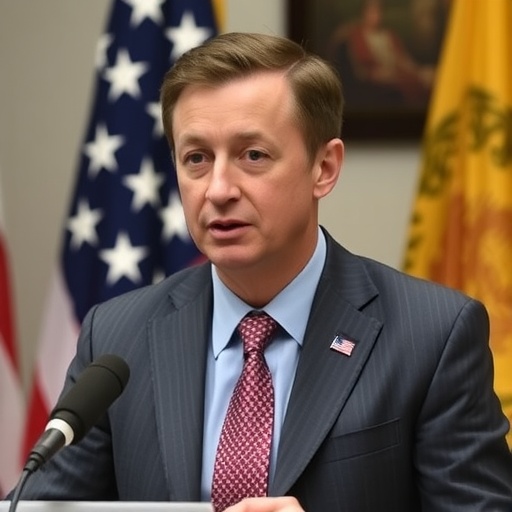Zelensky Pushes for Total US Sanctions on Russian Oil Sector to Starve Russia’s War Effort
In a impassioned address that underscores the escalating desperation on Ukraine’s frontlines, President Volodymyr Zelensky has urgently appealed to the United States to impose sweeping US sanctions on the entire Russian oil industry. Speaking virtually to a gathering of American policymakers and energy experts in Washington D.C., Zelensky argued that targeting only select Russian oil companies has allowed Moscow to sustain its brutal invasion of Ukraine, with oil revenues fueling an estimated 40% of Russia‘s federal budget last year. “We cannot let Putin refill his war chest drop by drop,” Zelensky declared, his voice steady but laced with the weight of two years of relentless conflict. This call comes as Ukraine faces intensified Russian assaults in the east, where ammunition shortages and delayed Western aid have left troops vulnerable.
- Zelensky’s Urgent Washington Outreach: A Plea Rooted in Battlefield Realities
- Exposing Loopholes in Existing US Sanctions: How Russia Keeps the Oil Flowing
- Russian Oil’s War-Financing Machine: Billions Pouring into Putin’s Arsenal
- Global Experts and Allies Weigh Zelensky’s Bold Sanction Expansion Proposal
- Looking Ahead: Economic Shocks, Energy Transitions, and Paths to Peace
The timing of Zelensky’s plea is no coincidence. With global oil prices fluctuating amid Middle East tensions and winter heating demands rising, the Ukrainian leader is leveraging a critical window to pressure the Biden administration. Current US sanctions have hit major players like Rosneft and Gazprom Neft, but exemptions for secondary markets and third-party buyers have enabled Russia to redirect exports to India and China, raking in over $180 billion in oil sales since the invasion began in February 2022. Zelensky’s proposal aims to close these loopholes, potentially slashing Russian oil revenues by up to 50%, according to preliminary estimates from the International Energy Agency (IEA).
Zelensky’s Urgent Washington Outreach: A Plea Rooted in Battlefield Realities
President Volodymyr Zelensky‘s virtual appearance before U.S. lawmakers on Thursday marked a pivotal moment in his ongoing diplomatic campaign. Dressed in his signature olive-green t-shirt, Zelensky recounted harrowing stories from the Donbas region, where Russian forces, bolstered by oil-funded weaponry, have advanced despite Ukrainian resilience. “Every barrel of Russian oil sold funds drones that terrorize our cities and missiles that strike our hospitals,” he said, quoting a recent Ukrainian intelligence report that links $10 billion in quarterly oil exports directly to military procurement.
This outreach builds on Zelensky’s pattern of direct engagement with Western leaders. Since Russia’s full-scale invasion of Ukraine in 2022, he has addressed the U.S. Congress twice in person and numerous times virtually, each time extracting commitments for aid. However, frustration has grown as US sanctions on Russian oil have proven porous. In his speech, Zelensky cited data from the Center for a New American Security, noting that Russia has adapted by using a “shadow fleet” of uninsured tankers to evade restrictions, shipping 3.5 million barrels per day to non-Western buyers. He urged the U.S. to expand the sanctions regime to include all entities involved in Russian oil transport and refining, effectively creating a blanket prohibition.
Behind the scenes, Zelensky’s team has been lobbying key figures, including Senate Foreign Relations Committee Chair Bob Menendez and House Speaker Mike Johnson. Sources close to the Ukrainian delegation reveal that Zelensky prepared for this push by analyzing IEA reports, which show Russian oil production holding steady at 10.5 million barrels per day despite Western measures. The proposal isn’t just rhetorical; it’s backed by a detailed white paper submitted to the U.S. Treasury, outlining enforcement mechanisms like secondary sanctions on foreign banks facilitating Russian oil deals.
Exposing Loopholes in Existing US Sanctions: How Russia Keeps the Oil Flowing
While the U.S. has imposed robust US sanctions since 2022, targeting over 1,200 Russian oil-related entities and capping the price of Russian crude at $60 per barrel, these measures have significant gaps. The price cap, introduced in December 2022 by the G7, relies on compliance from international shipping companies, many of which have quietly violated it to maintain lucrative contracts. According to a recent Bloomberg investigation, Russia has earned premiums above the cap on 70% of its seaborne oil exports, generating an extra $25 billion in 2023 alone.
Key loopholes include the exemption for oil bought below the cap and the lack of enforcement against shadow fleets. These aging, often Iranian-flagged vessels operate without Western insurance, transferring Russian oil mid-sea to dodge tracking. The U.S. Treasury has blacklisted over 100 such ships, but the fleet numbers around 600, per Lloyd’s List intelligence. In Ukraine, this translates to tangible harm: A Ukrainian Ministry of Defense briefing last week estimated that Russian oil revenues have financed the production of 5,000 Iranian-designed Shahed drones used in attacks on Kyiv and Kharkiv.
Statistics paint a stark picture. Pre-invasion, Russia‘s oil exports to Europe accounted for 40% of its total; now, redirected flows to Asia have stabilized revenues at $100 billion annually, per the U.S. Energy Information Administration (EIA). Zelensky’s call for sector-wide US sanctions would extend to downstream activities like petrochemicals and joint ventures, potentially disrupting 20% of Russia‘s energy infrastructure. Critics, including some U.S. energy executives, warn of short-term supply shocks, but Zelensky counters that the moral imperative outweighs economic discomfort, especially as Ukraine rebuilds from $400 billion in war damages.
- Key Sanction Targets Expanded: Beyond producers, refineries like those in Siberia and export terminals in the Black Sea.
- Enforcement Boost: Increased use of satellite monitoring and AI-driven transaction tracking to close evasion routes.
- Global Coordination: Urging EU and UK alignment to prevent sanction circumvention through neutral ports like Turkey.
Russian Oil’s War-Financing Machine: Billions Pouring into Putin’s Arsenal
The lifeblood of Russia‘s military machine is undeniably Russian oil, which has propped up an economy battered by isolation. In 2023, oil and gas accounted for 45% of federal revenues, funding everything from hypersonic missiles to conscript salaries. Zelensky highlighted this in his address, referencing a Reuters analysis that ties $300 billion in cumulative energy exports since 2022 to the procurement of 1,500 tanks and 3,000 artillery pieces deployed against Ukraine.
Volodymyr Zelensky‘s narrative isn’t abstract; it’s drawn from the frontlines. In a poignant anecdote, he described a Ukrainian artillery unit in Zaporizhzhia running low on shells while Russian positions, just miles away, receive steady resupplies bankrolled by Urals crude sales. The EIA reports that despite a 10% dip in production due to sanctions, Russia has offset losses by ramping up domestic refining, exporting refined products worth $50 billion last year. This resilience has prolonged the war, with Ukraine suffering over 500,000 casualties and infrastructure losses exceeding 30% of its pre-war capacity.
Economists at the Kiel Institute for the World Economy estimate that full US sanctions on the Russian oil sector could reduce Moscow’s GDP by 5-7% in the first year, forcing budget cuts to military spending. Yet, Russia has hedged with a sovereign wealth fund of $600 billion and alliances with OPEC+ nations like Saudi Arabia, which have tacitly supported higher prices. Zelensky’s push aims to dismantle this network, proposing U.S. penalties on any country importing above capped volumes, a move that could reshape global energy alliances.
From Ukraine‘s perspective, the stakes are existential. As winter sets in, Russian oil-funded gas pipelines—though curtailed—still pose leverage threats via hybrid attacks on European infrastructure. Zelensky invoked the memory of the 2022 Nord Stream sabotage, suggesting that unchecked Russian oil flows embolden such tactics.
Global Experts and Allies Weigh Zelensky’s Bold Sanction Expansion Proposal
Reactions to Volodymyr Zelensky’s call for comprehensive US sanctions have been swift and divided. Energy analyst Amy Myers Jaffe of New York University praised the move as “a necessary escalation,” arguing in a CNN op-ed that partial measures have merely trained Russia in evasion tactics. “Broadening to the entire sector would signal that the West is serious about ending this war,” she wrote, citing models showing a potential 30% drop in Russian oil exports within months.
Conversely, some voices in the U.S. oil industry express caution. Harold Hamm, CEO of Continental Resources, told Reuters that such sanctions could spike global prices to $100 per barrel, hitting American consumers amid inflation concerns. European allies, heavily reliant on alternative supplies, are more supportive; German Chancellor Olaf Scholz echoed Zelensky’s sentiments in a Berlin press conference, stating, “Ukraine‘s survival demands we squeeze Russia‘s energy lifeline.” The EU has already banned 90% of Russian oil seaborne imports, but landlocked flows via Druzhba pipeline persist.
International think tanks offer nuanced views. The Atlantic Council’s July report on US sanctions recommends pairing oil restrictions with incentives for allies like India to diversify suppliers, potentially redirecting 1 million barrels per day from Russia. Ukrainian economist Oleksandr Korniyenko, in an interview with The Kyiv Independent, supported Zelensky, noting that Russian oil revenues have sustained 15% inflation in Moscow, eroding public support for the war. “Sanctions aren’t just economic; they’re psychological warfare,” he said.
- Supportive Stance: UK Prime Minister Rishi Sunak pledges to align with U.S. efforts, targeting Russian shadow fleets.
- Cautious Optimism: IEA Director Fatih Birol warns of supply disruptions but affirms long-term benefits for energy security.
- Opposition Echoes: Chinese state media dismisses the proposal as “hegemonic interference,” highlighting Beijing’s role as Russia‘s top oil buyer.
Looking Ahead: Economic Shocks, Energy Transitions, and Paths to Peace
If the U.S. heeds Zelensky’s call, the implications for Russian oil and global markets could be profound. Treasury Secretary Janet Yellen hinted at openness during a Friday briefing, saying, “We’re reviewing all options to maximize pressure on Russia’s war economy without destabilizing allies.” Implementation might involve new legislation, like an expanded version of the REPO Act, authorizing seizure of frozen Russian assets to fund Ukraine‘s defense—potentially $50 billion in immediate aid.
For Ukraine, success could mean a tipping point in the war. Analysts at the RAND Corporation project that halving Russian oil revenues might force Putin to scale back operations by mid-2024, easing pressure on key cities like Avdiivka. Globally, it accelerates the shift to renewables; the IEA forecasts that stricter sanctions could boost U.S. LNG exports by 20% to Europe, while spurring investments in green hydrogen.
Challenges remain, including retaliation risks like Russia withholding remaining gas supplies or escalating cyberattacks. Yet, Zelensky’s vision extends beyond sanctions: He coupled his plea with calls for faster F-16 deliveries and long-range strikes on oil facilities inside Russia. As negotiations in the shadows—rumored in Istanbul—gain traction, crippling Moscow’s finances could bring Putin to the table. In the end, this push isn’t just about oil; it’s about denying Russia the resources to prolong suffering in Ukraine, paving a path toward lasting peace in a reordered world.








